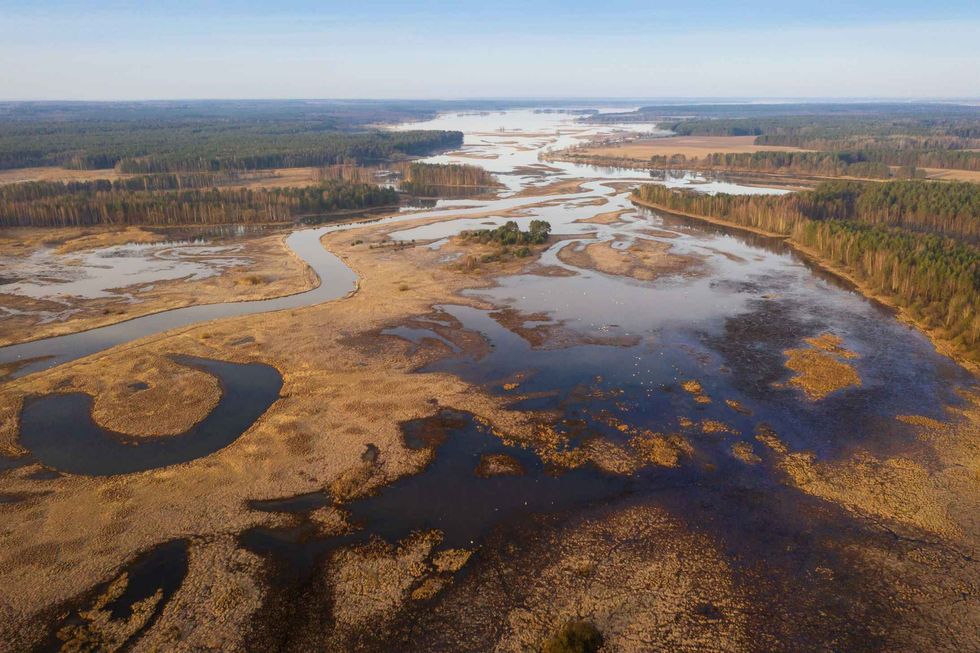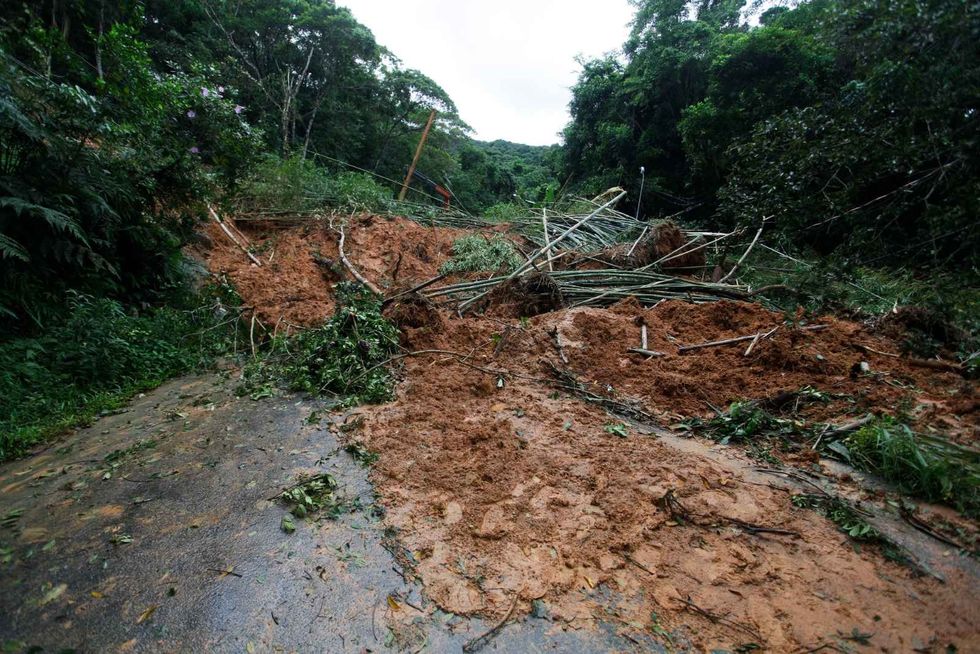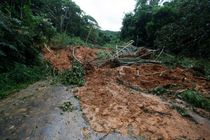Everyone Must Know These Astonishing Flood Damage Facts

Often accompanied by hurricanes, floods are regarded as one of the most dangerous natural disasters in the world.
Due to the increasing pace of climate change, floods are quickly becoming an extremely common phenomenon in coastal and low-lying regions. It is therefore extremely important for you to know the implications of a flood in order to take necessary action to protect your home from flood damage, such as flood insurance.
Excessive flow of water on normally dry land refers to calamity floods. Open reservoirs, flood gates opened by dams, heavy rainfall, and melting of glaciers can be the cause of it. Every year, floods affect a number of states in India as well as in other countries.
In India, flood-prone states include Tamil Nadu and Kerala that experience floods almost every year and the president has to declare an emergency.
With the depletion of the ozone layer, melting of massive boulders of glaciers, and climate change, floods are becoming more frequent and more destructive, causing excessive damage to life and property.
The world’s most deadly flooding took place along the Yellow River in China in the year 1931, which some estimates suggest took the lives of up to 4 million people. It may come as a surprise, but natural flooding is a requirement for farming for the deposit of rich new soil for agriculture.
Now farmers have adopted seasonal migration methods so as to avoid the damage from natural floods while reaping its benefits.
Here we shall be learning about flood facts, causes of floods in detail, methods to avoid and control the disaster. Read more to find out about flood policy, melting snow, and other flooding facts.
Causes Of Floods
Instances of floods have been increasing in the past few years. Other than climate change, there are several other reasons that are contributing to this increase in the number of floods being reported across the world.
It is therefore extremely important for you to understand the causes of floods in modern times to be able to formulate a plan to protect yourself and your assets from the damage caused by flood water:
Generally, floods are caused due to natural factors. But since manmade activities are affecting the environment at such an alarming rate, it has become one of the causes of floods. Areas near rivers and cities are often at risk of flash floods.
Flash floods are caused due to heavy rain when too much water gets collected in a narrow space. These are really dangerous as they happen with little or no warning.
Some of the prominent causes of flooding are as follows:
Heavy Rainfall: When excessive water flow due to massive rainfall affects flood-prevention infrastructure during such times, excess water does not drain out in the reservoirs. Such a situation causes a flood.
Several factors can cause extreme rainfall in a region. These factors include tropical cyclones, which are called hurricanes when appearing in the Atlantic Ocean or the Pacific Ocean. Then an atmospheric river can also cause extreme rainfall.
Rivers Overflowing: People who reside on river banks, in a flood basin, can have a risk of death or injury from floods that can be caused by the overflowing of these rivers. Factors such as melting of glaciers and heavy rainfall increase the water level in rivers and produce flood waters.
To prevent flooding, dams are built, which when not managed properly or not built according to certain standards, cause floods.
Collapsed Dams: Poor-quality dams collapse during heavy rainfall causing flood situations. In fact, sometimes well-built dams also collapse when rainfall is too heavy.
Melting Snow And Glaciers: Due to the depletion of the ozone layer, ultraviolet rays make their way to Earth, increasing the temperature of the planet. This increase in heat leads to the melting of snow and glaciers at a higher rate. In turn, this increases the water level in bodies of water, causing floods.
Deforestation: Reckless cutting down of trees for wood is a manmade cause of flooding. Trees and their roots control the flow of water, preventing soil erosion and loss of crops.
Emission Of Greenhouse Gases: Burning of fossil fuels, and heavy industrialization causing emission from chimneys, releases gases in the atmosphere that cause pollution which contributes to the greenhouse effect.
The greenhouse effect refers to the release of greenhouse gases in the atmosphere, such as carbon dioxide and sulfur dioxide, that cause depletion of the ozone layer and this is a major cause of manmade flooding.
Higher temperatures cause snow and glaciers to melt, and this causes a rapid rise in the water levels around the world.
Seasonal And Tropical Storms: Tropical storms and seasonal storms such as monsoons during a storm surge are among possible natural disasters. Heavy rain and melting snow can lead to flood water and flood damage.
Water flows very rapidly from steep valleys when strong winds are gusting, which can also cause significant damage. Land development becomes difficult in such situations because the rain will wash the land away before the land is developed with housing or businesses.
Hurricanes can destroy flood defences and cause catastrophic flooding as well.
Plus the heavy rain of monsoons will cause a flash flood that will engulf a region with flood water during a storm surge. If you live in a monsoon-prone region, it is a high-risk area for flooding and you will need insurance coverage.
Tsunamis: Tsunamis will cause devastating flooding, which can leave to massive loss of life, as illustrated by the deadliest flood in recent years, the 2004 Indian Ocean tsunami, that took 230,000 lives and caused $10 billion (£7.3 billion) worth of damage.
Tsunamis are caused by tectonic plate shifts, such as earthquakes, or other natural disasters, such as a volcanic eruption or landslide, triggering huge waves that engulf the land.
How To Control Flooding
Completely eliminating the risk of floods is not possible in any region. After all, you cannot fight the might of nature. But, that being said, it is certainly possible to control the extent of damages caused by floods. Here are some important flood facts related to controlling the damage caused by floodwater in your region.
There are quite a number of ways to control flooding. Flood management involves multiple engineering projects, funding, and planning. Stopping floods entirely is not possible as large water bodies are powerful and unpredictable and hence cannot be controlled in their entirety.
Still, a lot can be done to mitigate and manage the damage by floods, in order to prevent huge loss of life and property. Flood-risk management can help people who are located in flood-prone areas and are affected by coastal flooding. Some major ways by which floods can be controlled are:
Proper Construction Of Dams: Dams limit the water flow in rivers by diverting excess water into reservoirs. Dams should be filled and emptied according to strict rules. For example, dams should not be allowed to fill during monsoons. Dams provide storage for extra water that prevents floods to a great extent.
Management Of Rivers By Channelization: This also involves diverting water to ponds or temporary water-holding bodies by purpose-built canals or floodways, lowering the risk of flooding.
Afforestation: Natural disasters are a way to make humans realize the ecological balance they need to maintain. Trees reduce the risk of flooding by interrupting the flow of water, reducing its speed, and preventing soil erosion that reduces sediment flowing into rivers. Their roots maintain the integrity of the land.
Restoration Of Floodplains: Floodplains have the capacity to store water, reduce discharge, and even recycle harmful agricultural run-off. Floodplains restoration is a process that involves engineering the river to restore its natural patterns of meander migration and flooding.
Improvement in flood-warning mechanisms so that people are prepared for such situations.
Applying the concept of sustainable drainage involves the replacement of impermeable surfaces with permeable materials, such as grass, that will allow rainwater to drain into the soil.
Flood insurance is also an equally important precaution you must take. By compensating you for the losses suffered due to flooding, flood insurance can reduce the financial impact of the flood and offer you considerable peace of mind if you reside in a region that is highly prone to flooding.
Hurricanes and flash flooding have destructive potential which is a major risk. Rushing water from heavy rains during storm surges, as well as wave damage, and destruction of flood defenses, can all be caused by hurricanes.
If you live near the coast, then you must ensure you have a flood insurance policy along with some additional protective resources for your land.
An insurance policy is a contract that determines the claim that the insurer is legally required to pay if damage has occurred. Living in a high-risk flood zone should necessarily be covered under flood insurance coverage although some insurance companies will refuse to cover particularly high-risk flood areas from flood damages.

Consequences Of Floods
When flowing downhill, flood water can assume extremely high speeds and become even more dangerous for anything or anyone that lies in its way. The consequences of floods can be felt for many days or even months after the event has occurred. Here are some important facts related to the consequences of this natural disaster.
Floods can be disastrous, affecting life and property. Such floods can have social, economic, and environmental consequences, destroying land development. However, there can be positive consequences, as regular floods are essential for farming.
Diseases caused by floods also cause a lot of damage to the region. The instances of water-borne diseases increase in the regions affected by floods.
Many such areas have reported epidemic-like situations for various vector-borne diseases in different regions of the world. This puts extra pressure on the medical infrastructure of the region and makes the road to recovery even more difficult as the cases of disease continue to pop up for several weeks after the floodwater has receded.
Negative and positive consequences depend upon the extent of flooding that is being caused, as well as location. Damage caused by floods can cause social upheaval: for instance, when families are displaced resulting in trauma.
Flood impacts the environment drastically as it leads to the spread of waterborne diseases and the flow of chemicals in the soil that can affect the quality of the soil. Many animals die during floods, while dangerous species of animal can migrate to populated areas, creating havoc.
The most severe consequence of flooding is a bad economy. During floods, all kinds of business activities stop, a recession period begins, and food sources are destroyed causing inflation. The development of such areas will be at a standstill.
People are also compelled to migrate to safer places and so have to abandon their homes, businesses or jobs.
When it comes to flash floods, the situation gets even more serious. A flash flood is an event wherein excessive rainfall takes place in an area, usually hilly.
Here, the downpour is so heavy that the civic infrastructure is not able to cope with the amount of water falling in the form of rain and therefore results in flooding of the area in a short amount of time.
The water level rises so quickly that a lot of damage is caused to property as well as livestock. But the sad part is that it is generally not possible to prepare for flash floods as this natural disaster can strike without any advance warning signs.
Surprising Flood Damage Facts
Are you looking for more information on flood damage? Well, you must have seen the pictures of entire cities or even states being submerged under deep water due to floods across the world. But what is the situation in the U.S.? Let's have a look at these flood damage facts to better understand the implications of the natural disaster.
Flooding can cause serious health issues even after the disaster calms down, including disease.
During floods, you should find the highest spot to avoid contact with floodwater because the current can drag you under or carry you into danger. Floods can sweep away people, animals, and even cars and buildings.
All 50 states in the U.S. are subject to flash floods that can bring walls of water from up to 20 ft (3.04 m) high.
Since flood damage is almost never covered by homeowners' insurance, it is important for people living in low-lying areas that are flood-prone to get flood insurance.
Even homeowners who live in a supposedly flood-proof area can fall victim to the fury of floods as climate change across the world is leading to flooding in even the strangest locations, such as deserts.
The United Arab Emirates (UAE) is located in a desert region and is supposedly safe from the threat of floods. But in 2020, floods affected large areas across the UAE and Iran.
What made the situation worse was that the drainage infrastructure of the country had not been designed to handle flood water and historically floods have been a rare occurrence in these regions.
Flash floods that usually occur at higher elevations are often known as cloud bursts. Extremely heavy rainfall takes place within a short span of time, leading to the accumulation of water which the infrastructure is not able to handle.
We Want Your Photos!
More for You
See All
Doctorate specializing in Veterinary Medicine

Oluniyi AkandeDoctorate specializing in Veterinary Medicine
With an accomplished background as a Veterinarian, SEO content writer, and public speaker, Oluniyi brings a wealth of skills and experience to his work. Holding a Doctor of Veterinary Medicine degree from the University of Ibadan, he provides exceptional consulting services to pet owners, animal farms, and agricultural establishments. Oluniyi's impressive writing career spans over five years, during which he has produced over 5000 high-quality short- and long-form pieces of content. His versatility shines through as he tackles a diverse array of topics, including pets, real estate, sports, games, technology, landscaping, healthcare, cosmetics, personal loans, debt management, construction, and agriculture.
Disclaimer
1) Kidadl is independent and to make our service free to you the reader we are supported by advertising. We hope you love our recommendations for products and services! What we suggest is selected independently by the Kidadl team. If you purchase using the Buy Now button we may earn a small commission. This does not influence our choices. Prices are correct and items are available at the time the article was published but we cannot guarantee that on the time of reading. Please note that Kidadl is a participant in the Amazon Services LLC Associates Program, an affiliate advertising program designed to provide a means for sites to earn advertising fees by advertising and linking to Amazon. We also link to other websites, but are not responsible for their content.
2) At Kidadl, we strive to recommend the very best activities and events. We will always aim to give you accurate information at the date of publication - however, information does change, so it’s important you do your own research, double-check and make the decision that is right for your family. We recognise that not all activities and ideas are appropriate for all children and families or in all circumstances. Our recommended activities are based on age but these are a guide. We recommend that these ideas are used as inspiration, that ideas are undertaken with appropriate adult supervision, and that each adult uses their own discretion and knowledge of their children to consider the safety and suitability. Kidadl cannot accept liability for the execution of these ideas, and parental supervision is advised at all times, as safety is paramount. Anyone using the information provided by Kidadl does so at their own risk and we can not accept liability if things go wrong.
3) Because we are an educational resource, we have quotes and facts about a range of historical and modern figures. We do not endorse the actions of or rhetoric of all the people included in these collections, but we think they are important for growing minds to learn about under the guidance of parents or guardians.







